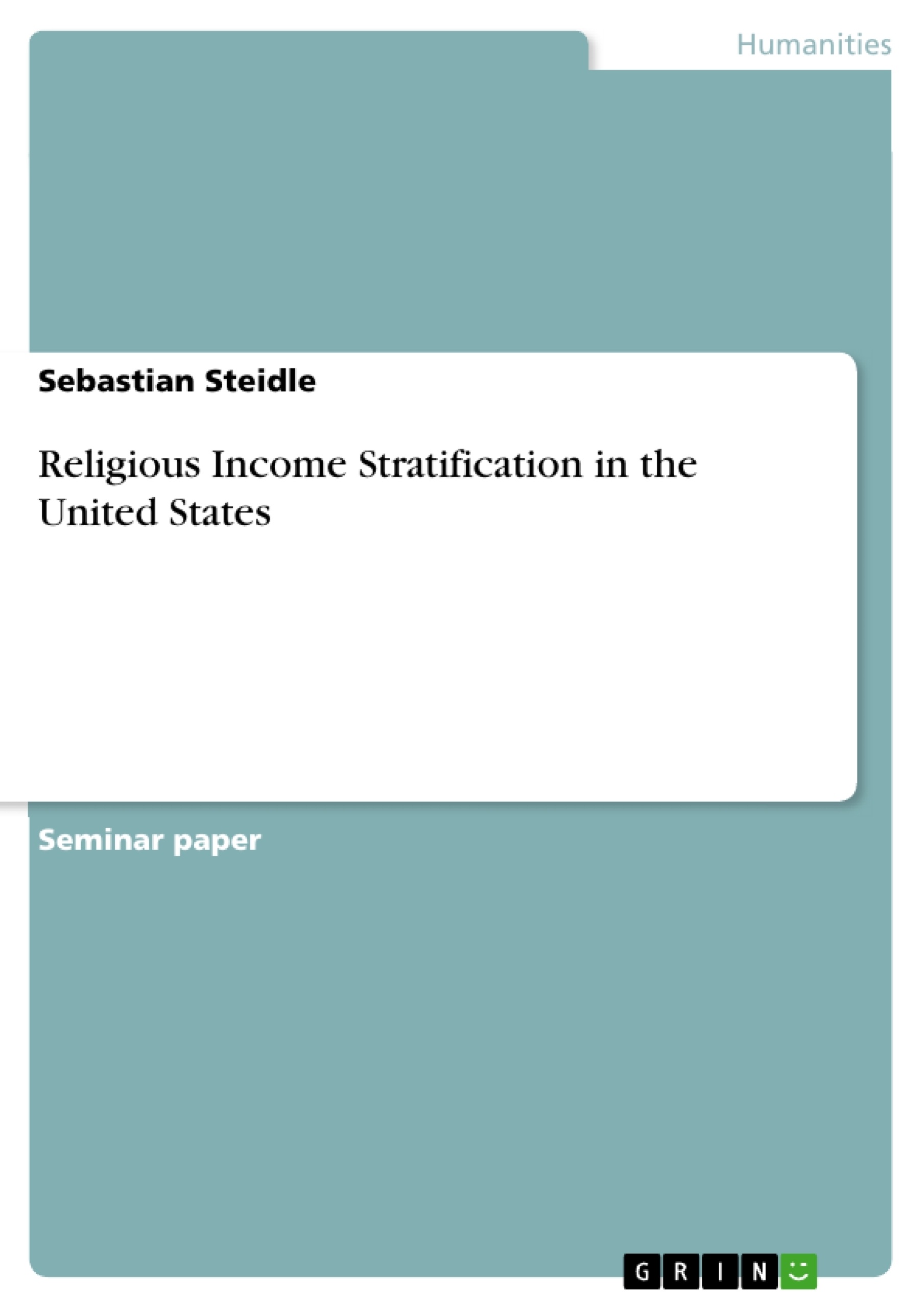Scholars have been investigating the relationship between religion and socioeconomic status ever since Weber's work on the economic consequences of the Protestant work ethic. However, most modern day social stratification researchers focus on the three „classic“ forms of inequality – race, class and gender – and religion as a factor, which influences the social and economical chances of an individual is often overlooked. It is argued, that modern societies are increasingly secular, and therefore religion lost its importance in public life.
While this is in general true for most western societies it has only limited validity for the United States. Furthermore, in recent times, a religious backlash, capturing sections of society, can be an examined in many parts of the world. It is also argued, that religious affiliation is a matter of personal choice. Research on the religious field recently focused on religion as a part of the lifestyle of an individual – or on sects, new religions and fundamentalism. In this context, religion is often rather seen as a result of a specific social status than its cause. Bourdieu argues, that in every class, religion has a different symbolic and function. Higher classes have the tendency, to emphazise a more rationalized approach towards religion. For lower classes on the other hand, religion just not only play a bigger a role in everyday life, but they have a more mystical conception of religion as well. Following this argumentation, it may be true, that being determines consciousness. But in this paper, I will understand "a religion" not as an individual ideology, which is highly dependent on one's social status, but as a (official) social group. In this understanding, religion is the basis of group affiliation and an important component of people's identities. Only when this distinction is made, the contradiction can be resolved, that the more affluent and educated religious groups have a lower church attendance, while at same time affluent and educated individuals within a religious group have a higher church attendance - and that people who are not affiliated to any religious group, have an income and educational level which is about the same than the national average.
Inhaltsverzeichnis (Table of Contents)
- Introduction
- Theory
- Socio-Cultural Theories of Religious Inequality
- Conflict Theory of Religious Inequality
- Religious income stratification in the U.S.
- Interpretation
- Income Inequality as a Result of Religious Ideology
- Religious Ideology as a result of Income Inequality
- Conclusion
Zielsetzung und Themenschwerpunkte (Objectives and Key Themes)
This paper aims to explore the relationship between religious affiliation and socioeconomic status in the United States. It investigates how belonging to a religious group shapes an individual's chances for economic well-being. The paper also examines the complex interplay between religious ideology and income inequality, considering both possibilities: income inequality as a result of religious ideology and vice versa.
- Religious income stratification in the U.S.
- The influence of religious affiliation on economic well-being
- The role of religious ideology in shaping income inequality
- The impact of religious values and practices on economic behavior
- The historical and sociological perspectives on religious inequality
Zusammenfassung der Kapitel (Chapter Summaries)
The introduction lays the groundwork for the study by discussing the historical context of the relationship between religion and socioeconomic status. It highlights the significance of religion in the United States and the need to consider it as a factor influencing social and economic opportunities.
The theory chapter delves into both functionalist and conflict theoretical approaches to understanding religious inequality. It explores Weber's work on the Protestant work ethic and its impact on economic development, as well as his analysis of the role of conflict and power in shaping religious inequality.
The chapter on religious income stratification in the U.S. examines the empirical evidence regarding the relationship between religious affiliation and income levels in the United States. It explores the different religious groups and their respective socioeconomic characteristics, highlighting potential disparities and trends.
The interpretation chapter analyzes the potential causes and consequences of religious income stratification. It investigates the extent to which religious ideology contributes to income inequality and explores the possibility of income inequality influencing religious beliefs and practices.
Schlüsselwörter (Keywords)
The main keywords and focus topics of this paper include religious inequality, income stratification, religious ideology, socioeconomic status, Protestant work ethic, Weberian theory, conflict theory, functionalism, and the United States.
- Citar trabajo
- Sebastian Steidle (Autor), 2015, Religious Income Stratification in the United States, Múnich, GRIN Verlag, https://www.grin.com/document/334706



